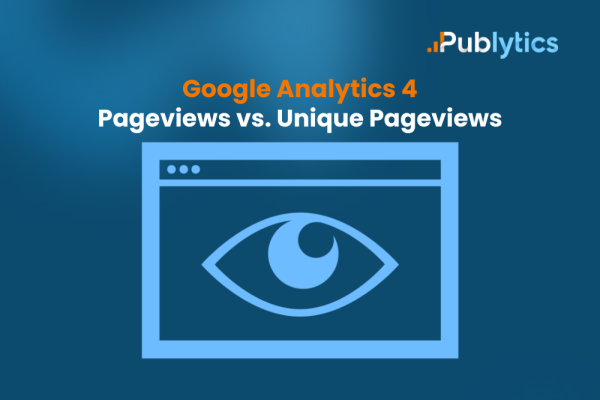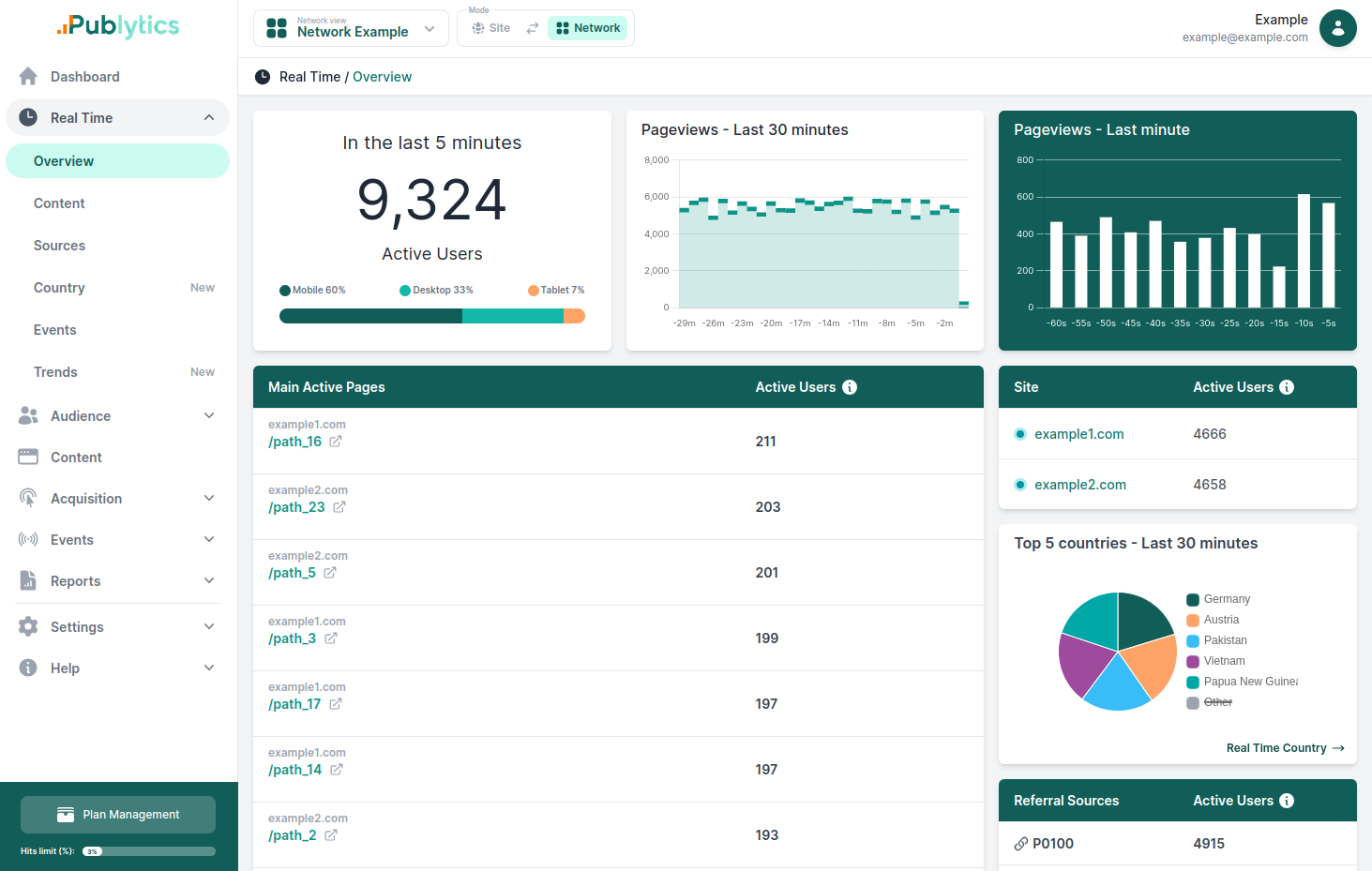Pageviews vs. Unique Pageviews in Google Analytics 4
Jan 03, 2024 | Author: Info Publytics

What's the difference between pageviews and unique pageviews in GA4? Here's the main differences:
Among the metrics available on GA4, "Pageviews" and "Unique Pageviews" are two different yet essential indicators that provide insights into user engagement. In this article, we'll discuss the distinctions between these metrics and why they matter in your analytics strategy.
Back in the old times of Universal Analytics, two metrics were fundamental to understand user behavior on single pages: pageviews and unique pageviews. Let's recap what was their meaning.
Pageviews: Counting Every Interaction
Pageviews serve as the foundational metric for assessing how often a particular page on your website is viewed. Each time a page is loaded or reloaded, a new pageview is tallied. This includes instances where a user reloads the same page, contributing to an increment in the overall pageview count.
For instance, if a user navigates to your homepage, reads an article, and then decides to reload the page, you'd register two pageviews for that single user in your report.
Unique Pageviews: Capturing Individual Sessions
On the other hand, Unique Pageviews in GA3 provided a more refined perspective on user engagement. Unlike regular pageviews, unique pageviews take into account the number of sessions during which a specific page was viewed at least once.
A session is a user's continuous activity on a website, and unique pageviews only count one view per session for a given page.
Consider a scenario where a user explores different sections of your website, including the same page multiple times within a single session. While regular pageviews would count each instance, unique pageviews offer a more precise metric by considering only one view per session.
Where to Find Unique Visitors in Google Analytics 4?
With the shift to GA4, new metrics were created and meant to replace these two:
- Views: which represents a view of a page on your site, and is the same concept of the UA Pageview we were familiar with
- Users: these represent the number of unique users that visited a specific page
GA4 tracks unique visitors based on events, whereas UA tracks unique visitors based on sessions. More specifically, Users are then segmented into:
- All Users: Every unique visitor, whether they do or don’t do anything on your website (i.e. they "engage" or not)
- (Active) Users: The group of engaged unique visitors OR anybody who visits the site for the first time
- New Users: A visitor who enters your site for the first time
- Returning Users: Anybody who re-visits the site after having already visited it (can be active or not)
This segmentation often makes it difficult to understand how things sum up and how the metrics should be interpreted. Google operates deduplication but often you will find that some numbers do not sum up in their dashboard because some users are counted in overlapping segments and the sums are not immediate to understand.
That is why in Publytics, on "Content" reports, we decided to keep the Unique Pageviews and Pageviews metric concept, which is much more straightforward in order to understand the number of times a page was visited (deciding to consider or not eventual refreshes). We do also provide de-duplicated metrics about Users in the "Audience" reports, so that you can monitor also the number of unique users and sessions, deduplicated, taking into account all at once the users that visited any page of a website.
How to make the most of this data
-
Refining User Engagement Metrics
- Understanding the differences between pageviews and unique pageviews is crucial for refining your analysis of user engagement. While pageviews give you an overall sense of how popular a page is, unique pageviews provide insights into the number of distinct sessions that involved viewing that page.
-
Tailoring Content Strategies
- Armed with knowledge about unique pageviews, you can tailor your content strategies to focus on creating engaging and unique experiences for users. It helps you identify pages that consistently attract new sessions and those that may benefit from content optimization to encourage revisits.
-
Optimizing User Experience
- By analyzing both pageviews and unique pageviews, you gain a holistic view of user behavior on your site. This information is crucial for optimizing the user experience, identifying popular content, and making data-driven decisions to enhance your user's engagement.
Remember, in the realm of web analytics, knowledge is power, and understanding these metrics empowers you to extract meaningful insights from your data, if you want a more intuitive and precise web analytics tool, we suggest to try Publytics, the Google Analytics alternative made for publishers.
Recent Posts
-
Enhancing Data Privacy in Web Analytics
May 13, 2025 | Author: Bruno Cazzaniga
-
How to Track Logged-in Users Without GA4 and Optimize Your Strategy
Mar 31, 2025 | Author: Bruno Cazzaniga
-
Track Article Author: How to Measure Content Creation Performance
Mar 14, 2025 | Author: Bruno Cazzaniga
-
Why Your Multi-Sites Deserve a Unified Dashboard
Feb 26, 2025 | Author: Bruno Cazzaniga
-
How to track traffic from Bluesky in Google Analytics (GA4) and other analytics tools
Dec 08, 2024 | Author: Info Publytics
Start monitoring your websites in few seconds No credit card required!
Start monitoring your websites in few seconds


